I Kid You Not: Disney’s Winnie the Pooh movies are meditative experiences
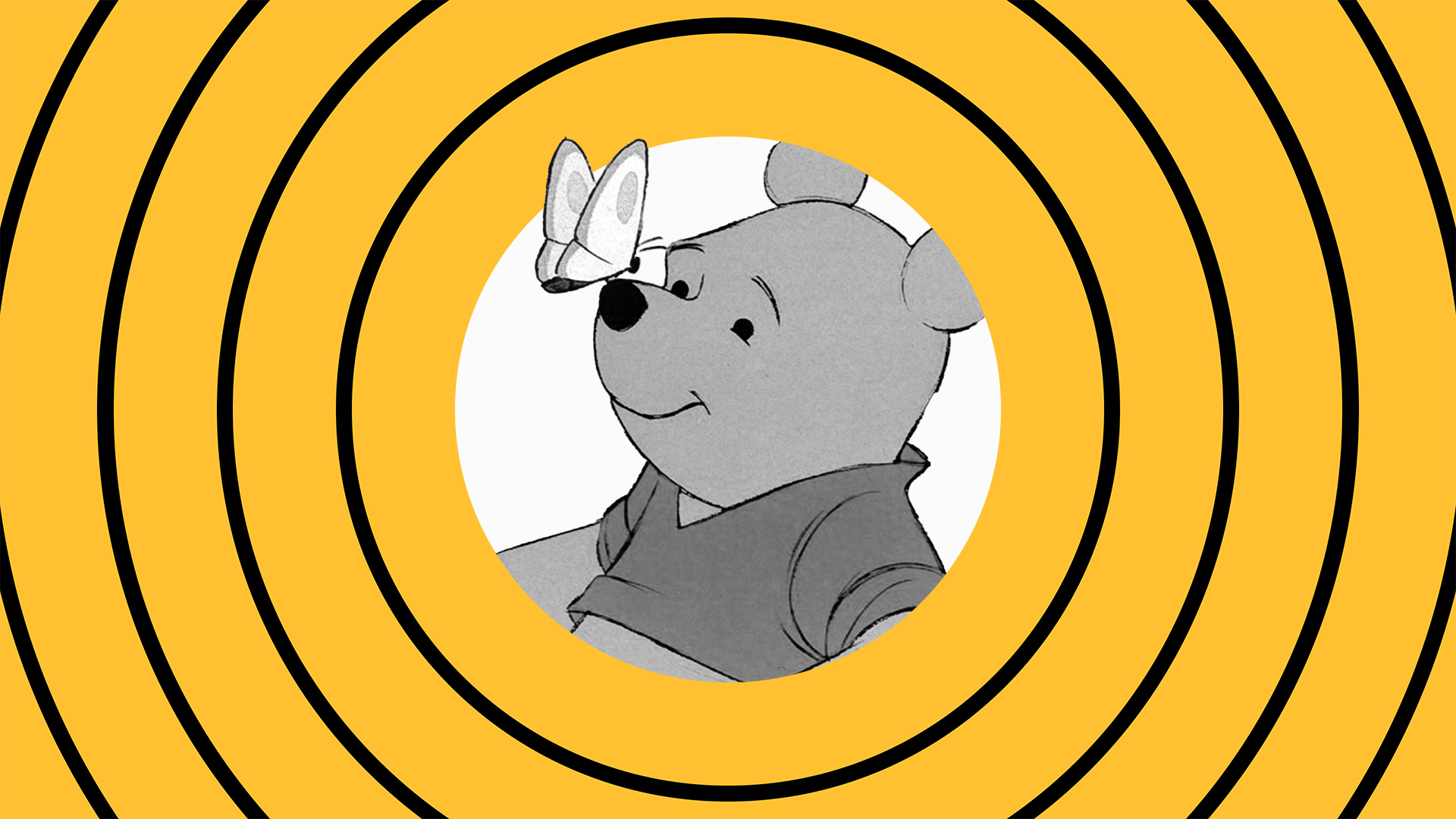
Who said family films aren’t cinema? In his column I Kid You Not, Liam Maguren critically evaluates the excellence in kids flicks and writes them into the history books. With a new tongue-in-cheek horror film doing an ironic adaptation of AA Milne’s creation, Liam looks back at Disney’s iconic takes on the peaceful Pooh bear.
Winnie the Pooh (2011)
“Meditative.” Us film dorks love that word. We typically use it to describe a movie that’s slow, quiet, and meandering—in a good way. But one person’s “patient and profound” is another person’s “boring and pretentious.”
Perhaps we need to rethink how we use that word when writing about cinema because a meditative experience can also be fun and lively. While the act of meditation evokes the image of a seated person with closed eyes and a steady breath, the ultimate goal is to keep the mind still and draw out a sense of contentment, a mode some people achieve through more active experiences like running, drawing, or knitting.
To a similar effect, 1977’s The Many Adventures of Winnie the Pooh and 2011’s Winnie the Pooh achieve this in their own playful and carefree ways, making them two of the most accessible meditative experiences cinema has to offer.
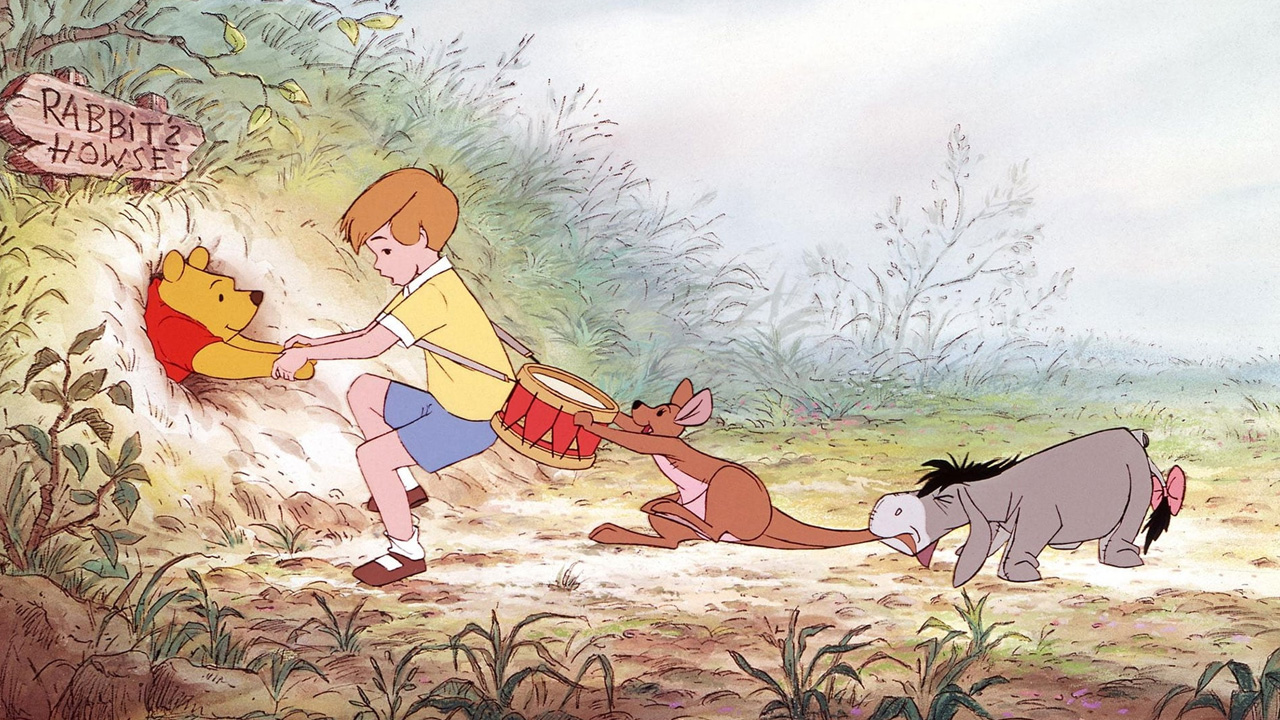
The Many Adventures of Winnie the Pooh
Taking on a breezy anthology format, both films mix AA Milne’s stories with Disney’s exclusive take on the character (AKA Red Shirt Pooh). The 1977 film introduces a beautifully humbled rendition of Hundred-Acre Woods with mini-stories showing Pooh searching for honey, Piglet getting caught in a “Windsday” gust, and Tigger being a bit too extra with everyone.
These characters are straightforward but relatable; their situations slight but entertaining. Even the smallest child has a Piglet in their life and knows what it’s like to crave a portion of food they love, while their parents will surely have come across a few Eeyores in their time and relate to Rabbit’s angst of having to suddenly accommodate an uninvited guest.
I wouldn’t completely consider the 2011 film to be a reboot or a sequel. Technically, you could say it’s both, but it feels more like a homecoming to me, especially for those whose childhoods contained multiple rewatches of the original. This return to Hundred-Acre Woods sees Pooh hunt for honey (again), his pals search for Eeyore’s missing tail, and Owl convincing everyone of a creature that doesn’t exist.
That’s it. That’s the film. It’s not even an hour long, and that’s OK. The 1977 feature was only slightly longer at 74 minutes. Everything’s simple in Winnie the Pooh, but perfectly simple. And that simplicity goes much deeper than the plot and running time.
Visually, Walt Disney Animation Studios put almost all its manpower into the characters. This move not only saw the return of glorious hand-drawn animation, which they displayed two years prior with the much more energetic Princess and the Frog, but a much older flavour of Disney—one that prioritised personalities over spectacle.
We’re talking old-school Disney where technical constraints forced them to make the most of limited backgrounds. It’s easy to forget that the first third of Pinocchio took place in Geppetto’s tiny house, or that 1973’s Robin Hood pulled off a feature-length action adventure with only a handful of locations, but by getting the most out of their animated players, it allowed audiences of any age to direct their complete focus on the characters.
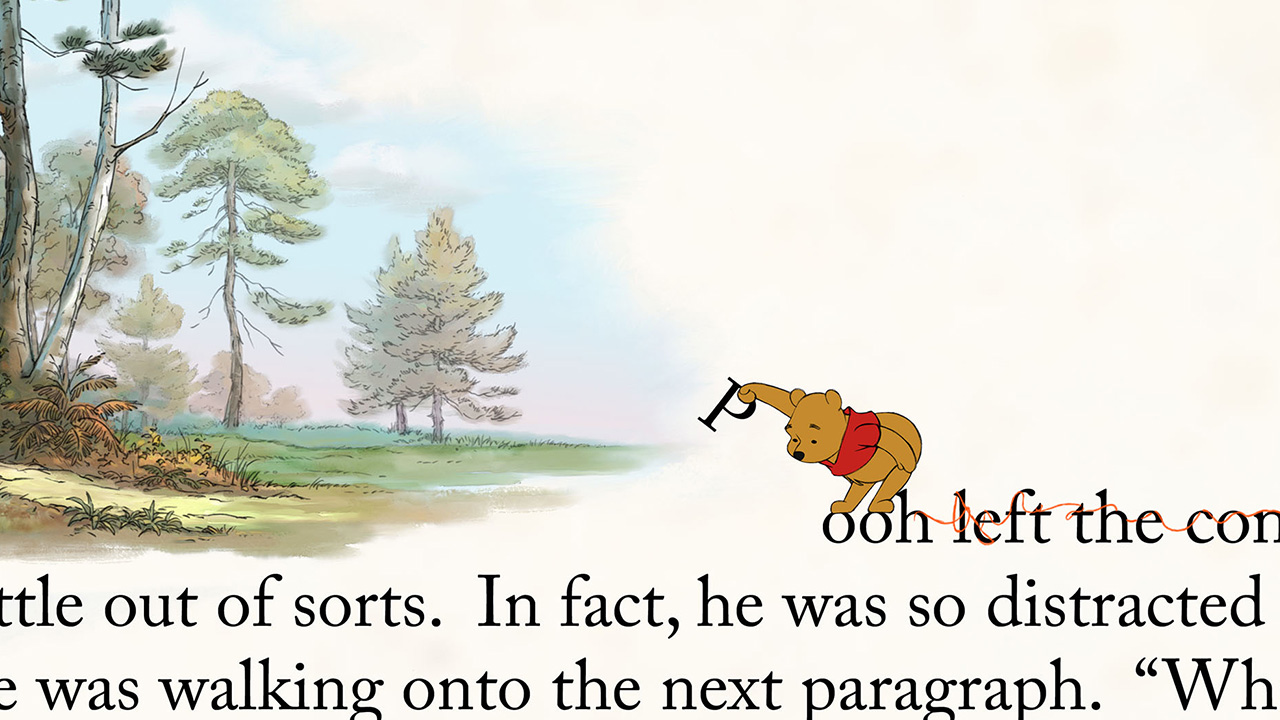
Winnie the Pooh (2011)
Those films bookended their fairy tales with a literal book opening at the start and closing at the end—as if they were transporting the viewer inside the magical world of the novel. The Winnie the Pooh movies do this too, but this magical world felt much closer to home. With its hearty trees and grassy planes far removed from the structures of humans, Hundred-Acre Woods could very well be the park down the road. Or the school fields. Or your very own backyard. Wherever it was, you could find that place of peace and contentment.
They go further with the book framework, playfully including witty remarks from the narrator (“Owl talked from page 41 to page 62”) and having the characters interact with the typed text (you could sometimes read the dialogue before it was spoken). It’s very fun, especially for a child experiencing meta-ness for the first time (and as for you adults, I think the script will often surprise you with its comedic cleverness).
More importantly, it’s a constant reminder that this world is make-believe, where nothing bad can actually happen because it’s all a work of fiction. We are all outside the story looking in, similar to removing yourself from your head and concentrating on your breath.
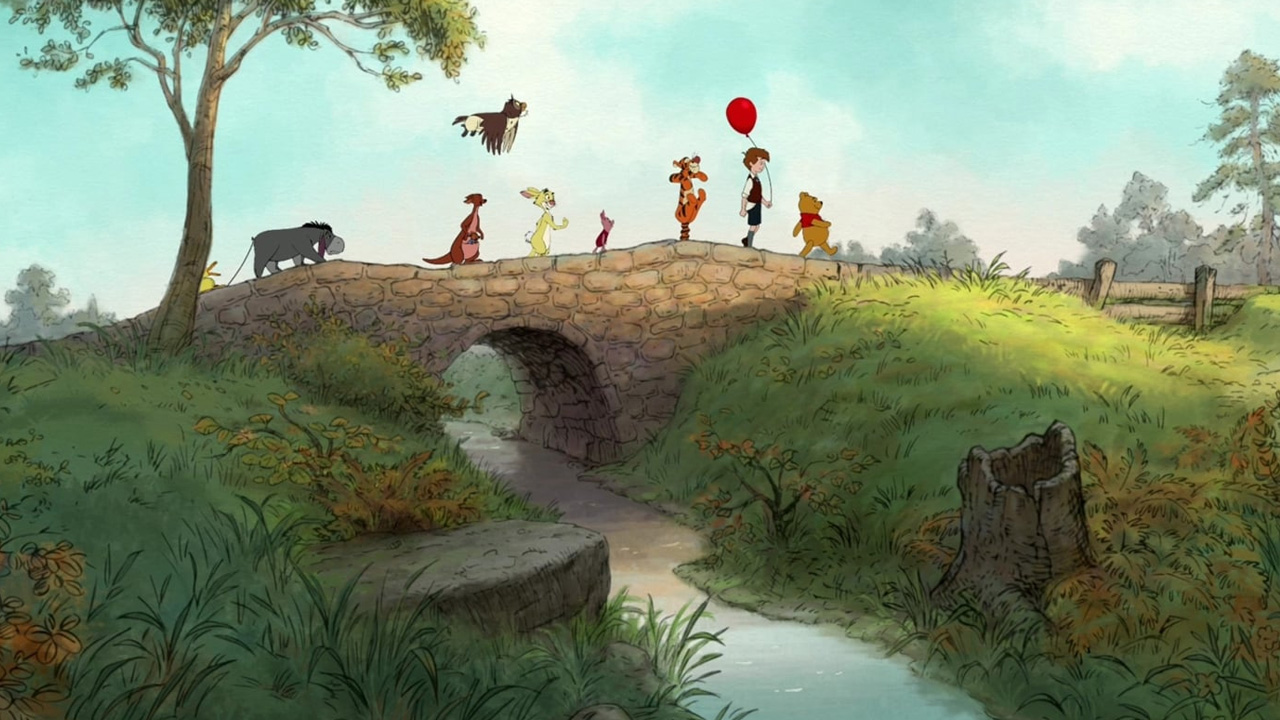
Winnie the Pooh (2011)
The gentle innocence of Hundred-Acre Woods provides an escape from the noisy chaos of The World—or, more specifically, the woes of warfare. Having suffered from PTSD brought on by The Great War, AA Milne committed himself to writing about those horrors. However, he temporarily shifted focus from advocating the need to avoid unimaginable tragedy to promoting a sustainable vision of peace. Thus, Winnie-the-Pooh.
(British 2017 drama Goodbye, Christopher Robin covers all this pretty well, along with the problems that came with Milne injecting his son into the stories and consequently subjecting the innocent boy to worldwide fame.)
With the copyright passing its 95-year expiry date, Winnie-the-Pooh is now in the public domain (not Red Shirt Pooh, that’s still Disney’s bear). This has led to Winnie-the-Pooh: Blood and Honey, a tongue-in-cheek horror which may have ruffled some feathers, but was an inevitability.
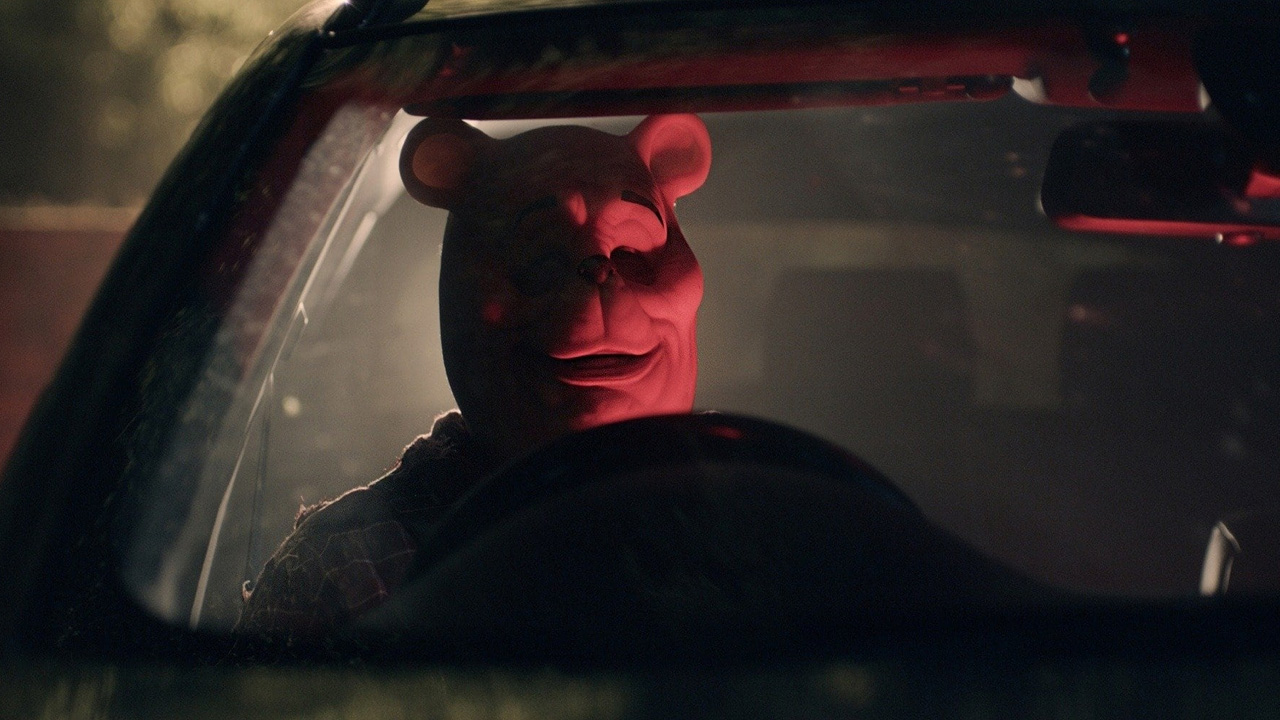
Winnie-the-Pooh: Blood and Honey
The neverending popularity of gritty remakes got us to this point, and the fact this got as much attention as it did ultimately speaks to the success of Milne’s creation as a story of peace, tranquility, and contentment.
Benjamin Hoff’s book The Tao of Pooh and The Te of Piglet draws a more direct line between the characters and the principles of Taoism through a Western lens. However, the Disney films do a masterful job of turning the property into a cinema experience—a serene, meditative escape into a beautifully uncomplicated world.
It also reminds us all that we can find that world in the park down the road. Or the school fields. Or our very own backyard.



















